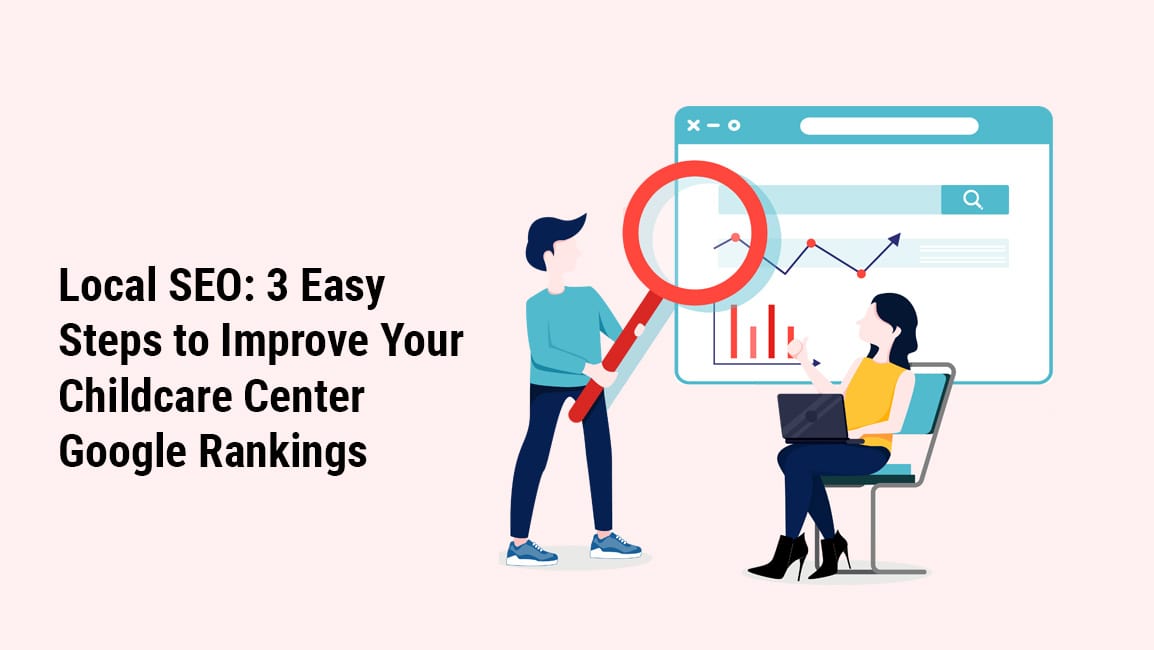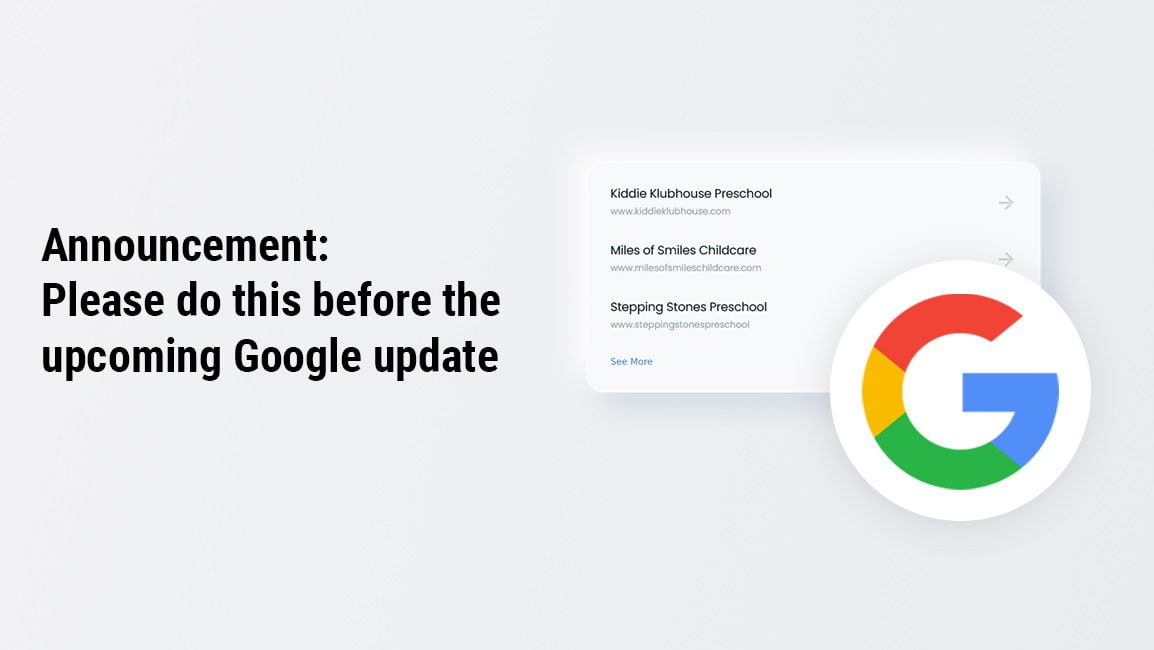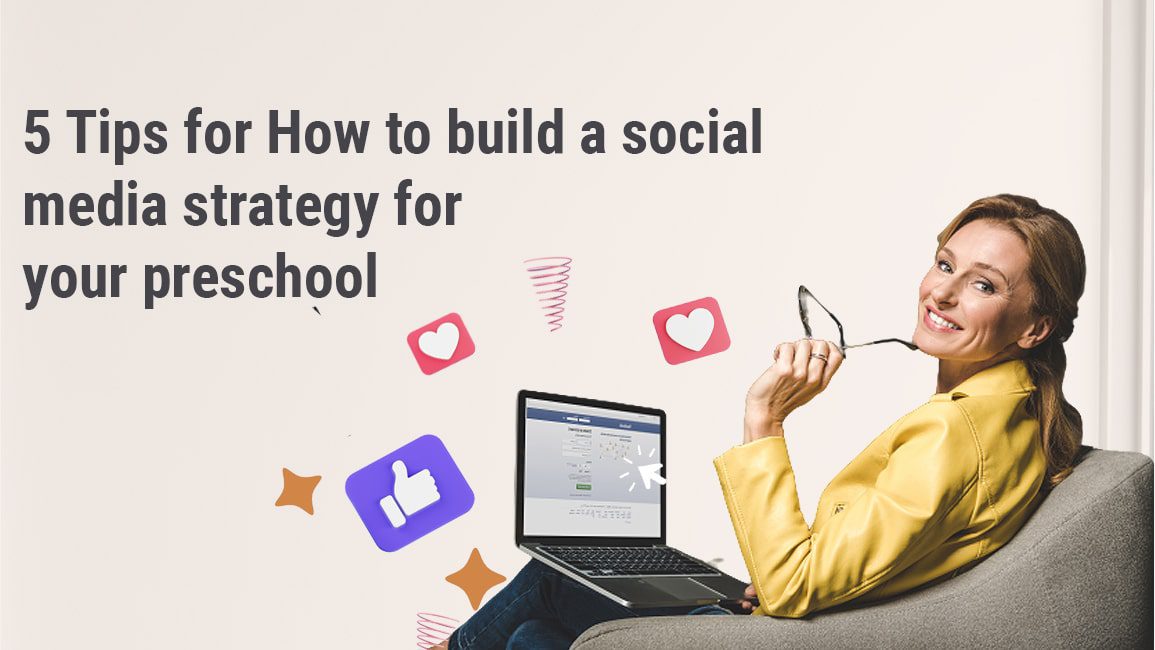Are you finding it challenging to market your preschool online, especially when it comes to Social Media?
You are not alone. 67% of childcare providers feel the same way when it comes to Social Media Management. In addition, 47% of childcare business owners find social media marketing overwhelming. The crowded social media world makes it more difficult for childcare professionals to choose the right platform, especially for newly opened preschools.
If you are looking for a way out of this to build a concrete social media strategy for your preschool that drives traffic to your website, then you are in the right place.
By the end of this guide, you will learn how to build a social media strategy for your preschool that will attract parents to your childcare center.
But first and foremost:
Why Is Social Media Important for Your Preschool?
Social media is a concrete plan aim to create engagements and interactions across your social media that will help your business grow and establish your brand.
87% of preschool owners– find it hard to reach the correct audience, measuring ROI, and tough to achieve their business goals.
With a proper social media strategy, you can counter these problems and build appropriate connections with prospective parents.
You can also track – what the parents are looking for in your preschool and build a marketing plan accordingly. Social media will also help you track the most desirable content in the past and what may work in the future.
It will allow you to network with the parents and understand their preferences. Based on that you can create effective marketing strategies for your childcare business.
Social media marketing will also help you to establish your preschool as a trustworthy brand. You can tell your story through social media channels and always experiment with the content you deliver.
Let us now move on to the step by step process to create a social media strategy for your preschool:

1. Target The Right Audience
According to Hubspot – for every business, documenting your ‘buyer persona’ is of utmost importance for marketing to the right audience. Buyer persona is the ultimate sketch of your potential buyer – their interests, habits, goals, and problems.
Documenting your buyer persona includes various factors like:
- Defining your potential customer ( ideal type parent )
You have to research what kind of parents you want to attract to your preschool. For example, are they single parents looking for professional help in education or working parents who have different needs.
Knowing your target audience will boost your productivity, save your time and energy, and budget. For example, if you run a preschool, you don’t want to target parents who have children above 6 years old.
- Identify their problems
Now that you are clear on your target audience – the next step is to identify the problems and challenges of the targeted parents:
For example, do they want better meal plans?
How can your preschool help them to make their children more disciplined?
How can you help them to ease their parent job?
How can you help their child to focus?
How can you help their child to learn empathy?
The more you solve their problems, the more parents will choose your preschool. Lauren, with an experience of more than 12 years running her preschool, says – “ As a parent, they are already doing a tough job; if you come forward and solve their problems, the rest will take care of itself.”
- Research your competition
If you want to establish your preschool as the top brand, you should know what your competitors are doing because you can only outrank them if you learn better about them.
Marketing experts like Neil Patel and Brian Deanrefer to competitive research as an essential step before creating content – for it will help you find your competitor’s strengths and weaknesses. It might also help you to identify your opportunities and use them for your business goals.

2. Deciding The Correct Platform
Now that you have the roadmap of your target audience, the next step is to decide on the social media channelswherein you will post your content to promote your preschool. Before deciding on social media platforms, you should be aware of where your target audience, i.e., prospective parents, are spending most of their time on-
Andrew Delaney, the Social Media Marketing Manager at Hubspot, says – “ It is important to be where your audience of potential customers is today, and where they might be tomorrow. It’s better to be ahead of the curve than behind.”
Some of the best social media platforms for your preschool are:
91% of parents use social media, and amongst them, Facebook tops the list. The recent online survey shows that almost three-quarters of online parents use Facebook. Moreover, among parents who use Facebook, 75% of them log on daily, confirms Pew Research Center.
New moms and younger parents are active users on Facebook. You can use it to your advantage. Through Facebook, you can reach out to your ideal parents, convey your brand story, connect with them, and build your social media presence.
Pinterest is the second most popular among parents. Around 28% of total parents who are online use Pinterest. It is a platform wherein you can use your preschool images to tell your story and promote your childcare center.
Pinterest is also a great tool to boost your website traffic and increase your brand awareness. In addition, you can use it to promote your brand voice and connect with your ideal parents.
Linkedin is the third most popular social media channel used by parents online. A quarter (27% ) of online parents use Linkedin. Parents are found using Facebook and Linkedin more often than Instagram.
Linkedin is a professional-driven community. Used more by professionals and business owners, this platform can be a good spot for you to network with other professionals and update yourself with the latest happenings in the childcare industry.

3. Content Creation
The next important step is to create unique and engaging content for your chosen social media platforms. Creating engaging content is of utmost importance, given that your competitors are producing content on the same platform and on the same topic.
While creating content, you should note that – each social media platform has its unique features that differ from each other. So create content that suits the particular platform, and you can also take advantage of their features. For example, if your preschool is launching a new program, you can go live on Facebook for announcements and promotions.
Three things to consider while creating your content:
- Take inspiration from your competitors
You can take inspiration from your competitors and get some ideas on how to publish your content. You can also take inspiration from industry experts and implement those ideas into your content to promote your brand.
Make sure you take some clues but not copying them while creating content for your preschool. For example, you can add your brand’s USP to the content you produce to promote your brand.
- Encourage active participation through your post.
While creating your content, make sure you are encouraging your audience to participate. For example, in her latest Facebook post, parenting expert Dr. Shefali Tsabary mentioned – how children are not the instrument to fulfill their parents’ unfulfilled dreams and asked her audience whether they agree?
Result – No of parents flocked to her comment section retelling their part of the story. Creating engagements is a crucial step to drive traffic to your website and build connections with your audience.
- Establish the uniqueness of your brand through your post
Social media is an effective tool to establish your brand’s unique voice. It creates an identity for your brand. While creating content for your brand, make sure you are covering the uniqueness of your brand.
If your preschool parent-child weekend classes are popular among your peers, make sure your post highlight that – it will establish better connections with your ideal parents.

4. Create a Social Media Content Calendar
Creating content is not enough if you want better engagement for your preschool. You should have a proper pre-plan to post your content for better and effective results.
Social media calendar helps you to preschedule your content that can produce maximum results. It will also give you a documented report of your social media activities which you can use for future reference.
Further, it can help you to:
- Organize a schedule for your post
Your social media calendar will tell you the best time to publish your post. It tells you the time and dates to post your content and also on which channel. It is the perfect platform to plan all your social media activities, from blog posts to videos to link sharing.
Your social media calendar will help you to create a social media campaign for your preschool. In addition, it will help your content creation to get a practical roadmap for better engagements.
- Decide the content mix.
Social media calendar will help you strategize on what kind of content you want to post and what kind of results you want to achieve through them. It will also help you to determine what percentage of content will target what results?
For example, if you want to educate your audience or inform your audience or promote your brand? Social media calendar will help you to categorize your business plan to fetch effective results.

5. Evaluate Your Results
Social media strategy is one of the most essential tools for your business. It documents your every targeted move defined to grow your business. However, it might take some time for you to get the strategies working right for you. Some steps may not work, while others may outperform your expectations.
Developing your social media strategy is not enough, but analyzing your strategy is equally important. It keeps you updated on how your efforts are effective or not to meet your business goals.
Steps to evaluate your results:
- Social Media Metrics
Social media metrics are important as it gives you a detailed view of your social media campaign. For example, it will tell you which posts have helped you to drive traffic to your website and which failed. The important metrics you should be watching out for are – engagement, followers, tag, shares, profile visits, mentions, video views, and reposts.
Social media metrics will help you to evaluate your social media goals. For example, suppose your social media goal is to create conversions, build a community around your business, or generate new leads. In that case, social media metrics will analyze the results of the efforts you are putting into your social media goals.
- Tools to measure social media metrics
Every Social media tool has its social media metrics tools – for example, Facebook has Facebook Analytics, Instagram has Instagram Analytics, and Twitter has Twitter Analytics. However, experts suggest Google Analytics as one of the best tools to evaluate your social media strategy.
Once you evaluate your social media strategy, you will have a better idea of what is working and what is not for your business. Then, you can accordingly readjust your social media strategy and create better content to drive traffic.
Need Help with Social Media Strategy?
At PREto3, we help childcare businesses promote their brand and attract more parents to their childcare centers. PREto3 has already helped tons of preschools build a result-driven Social Media Strategy that drives traffic to their website. Start your free trial with PREto3 today!
Stay up to date on the latest company news from PREto3 and see what media outlets are saying about us



